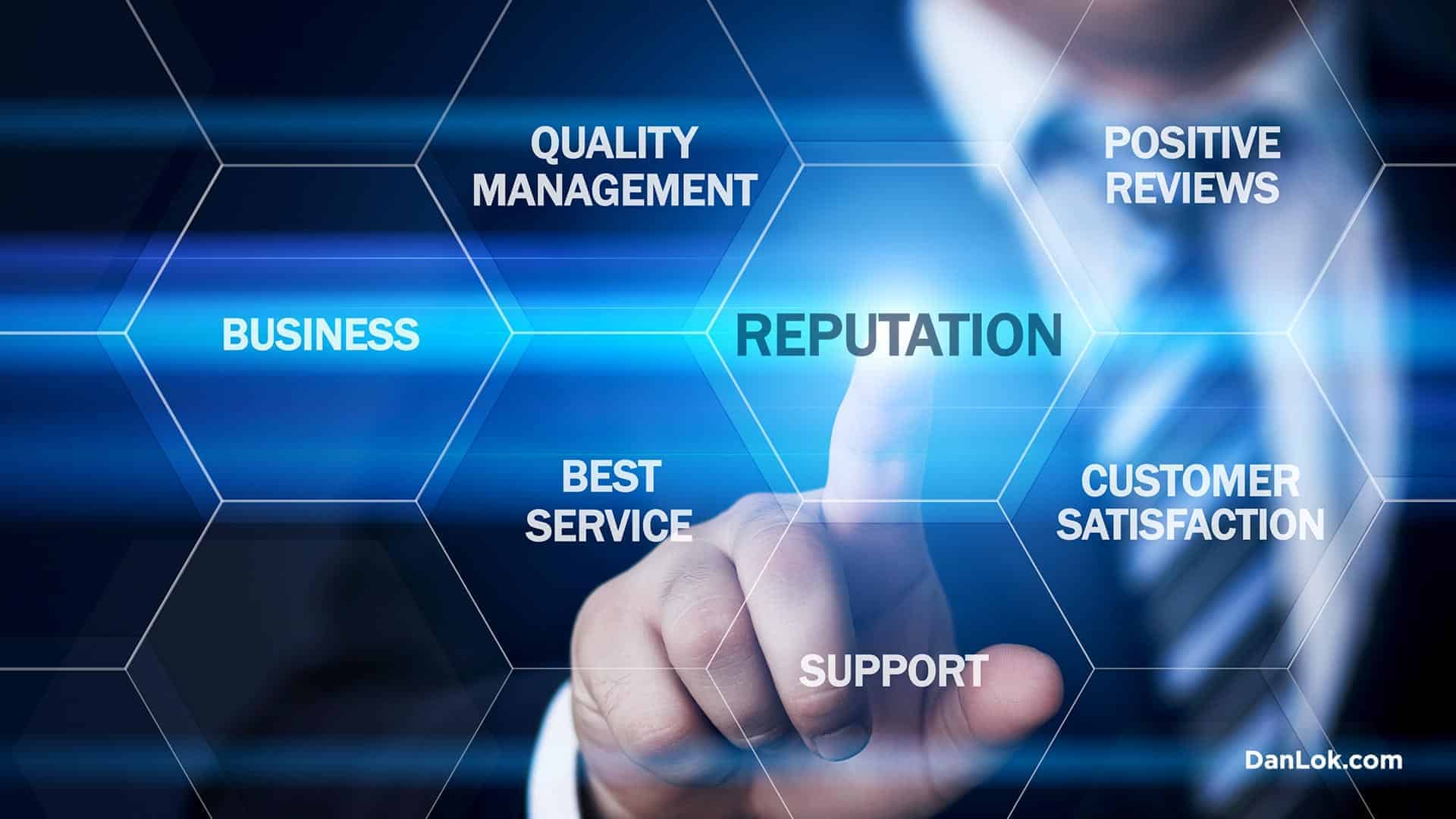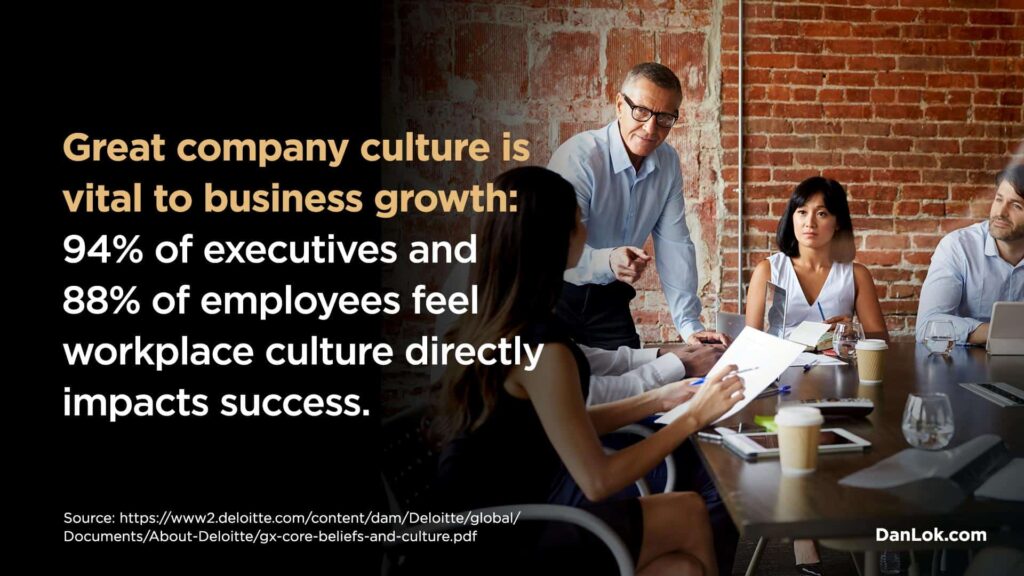We hate to break it to you, but if your business is falling apart, it’s probably not your team’s fault. It’s probably yours. That’s why you need to be sure of one thing – how to manage professionals better.
As a leader, you’re responsible for the talent you bring in. They might have the skills, but they could still lack training when it comes to scaling the business.
Most professionals know how to do their job. They do what they’re supposed to and then call it a day.
Yet few of them are thinking about going the extra mile. When a team works hard together to help each other grow, everyone will get to reach their full potential.
You could scale your business faster, and your professionals will get recognized easier. That’s what a dream team is all about.
A lot of business owners are missing this big picture. They find ways to become less involved in team projects instead.
If you don’t put enough work into your team, your team isn’t going to do the same with your business.
Without further ado, here are some ways you can learn how to manage professionals:
It All Starts With You
Your business is a reflection of you. Share on XBefore you think about hiring more people, you have to be transparent with yourself first.
Can you be a role model for them? Is there something you still need to develop so that you can share what you know?
The chances are you don’t know everything yet. Nothing can be more powerful than a leader who is always learning. With that, others are likely to look up to you for guidance.
What makes a good leader is someone who can give support to their team. For that to be possible, you’ll need confidence and skills. Once you’re able to motivate others to do the same, their performance will speak for itself.
A good question to always ask yourself is, “How can I make this better?”
It’s rare for businesses to have a perfect anything in place. To optimize your operations and systems, you have to keep in mind there is room for improvement. Don’t settle for anything less.
When you’re learning how to manage professionals, they need to think the same way. It will challenge them to become better versions of themselves. This will get them to invest time in maximizing efforts.
Understanding Their “Why”
You have a “why” and other people have their own “why.” Do you know everyone’s “why” though?
Why do they do what they do? Why do they want to work with you? Or, why do they make certain decisions?
When you understand everyone’s “why,” you will learn how to manage professionals better. You will know their goals and what they’re trying to achieve when working with you.
If they want to work with you because they look up to you, then you should lead them to the path of success. If they want to grow within their skills, then you should challenge them. Give them new opportunities to level up faster. Everybody will win.
All it takes is for you to listen to their personal goals. Then you guide them in the right direction while they help you. That’s the bridge you need to build for them to close the gap.
Some business owners don’t challenge their team enough. They leave them with repetitive tasks and don’t end up feeling fulfilled in their position. This is why it could take years for employees to receive a promotion.

People have asked Dan Lok many times how he was able to become successful at a young age. His answer? His “why” was big enough. What that means is that he had no choice to give up and was that hungry for his success.
When your “why” is big enough, you’ll go out of your way and do whatever you can to get what you want. That’s what Dan did, and it works for him.
It’s no different for anyone else. Most people have a strong “why” but haven’t discovered how to achieve it. That’s why it’s your role to understand them and lead the right way.
Mind & Body Over Everything Else
This is what the Global Wellness Institute found in a survey:
When workers feel mentally unwell, it affects their work performance.
- 62% of workers say it affects their ability to get work done
- 63% of workers say it affects their engagement in work
- 62% of workers say it affects their motivation to do the job well
This includes your team’s emotional well-being. When your mind and body aren’t in the right place, everything else won’t be either.
The main cause of this can be because of stress, pressure, or the work environment itself. It’s important to keep the energy high within your team.
You can relate this situation to batteries. Every new battery is packed with a lot of power until you start using it. Sometimes it can be overused for a short period of time. This will make the battery weak and not work anymore.
In your case, your team is your power source for your business. Their performance will determine the short and long-term impacts.
Once you get how to manage professionals at a high-level all the time, you’ll have a powerhouse team. The result of this will transform into a lot of accomplishments.
To get your team to operate with good mental wellbeing all the time, they need to have the right mindset first.
What differentiates entrepreneurs from each other is their mindset. A typical mindset is different from a millionaire mindset. If you or your team want to get to the next level faster, they need to be thinking at that level first.
One way to adapt the right mindset is by visualizing what you want to happen. Your team needs to do this too. You can remind everyone of their goals and what’s going to happen once they achieve it.
Be authentic, genuine, and interesting. It doesn’t have to always be about seriousness in the workplace. Also, encouragement is not a hard thing to do, and it will work in ways you can’t imagine.
Mindset can give anyone the motivation to succeed. Once you have it, not even a rainy day will bring you down.
The Training Never Stops
Once you learn something once, it doesn’t mean you’re done learning forever.
The world keeps changing and people keep innovating. There’s no real stop to learning because you will fall behind in the market if you’re not up to date.
You have to expect the same from your team. If they are open to keep learning and honing in on their skill set, it’ll give them more motivation.
In fact, the training part of every new job is likely the most motivating. That’s because you’ll be eager to learn something new and get good at it. Once you gain a new skill, you’ll feel the job is worth it because you see improvement in yourself.

American Author Dr. Seuss said, “The more that you read, the more things you will know. The more that you learn, the more places you’ll go.”
When you figure how to manage professionals and their attitudes, achievements are endless.
Training doesn’t have to come from you all the time. It can come from your top performers in your team. You can offer them a promotion when you feel they deserve it. Also, provide them with the necessary leadership skills to train someone else.
The goal is to always keep everyone learning. Then, celebrate the outcomes together.
Avoid The Lone Wolf Mentality
The way you build your team environment is going to determine how you will build your success.
With that said, it’s not always better when individuals are too independent. When they’re used to working alone, they can fall into a lone-wolf mentality.
Being a lone wolf will keep you from building strong connections. You can gain so much more valuable insights from other people. It makes a huge difference when everyone in the work environment is helping each other grow.

When you make time for the people you work with, they can inspire you to do better. You would be able to count on your team’s support when it comes to feedback.
Feedback is crucial for everyone’s performance. Without it, you wouldn’t know how to manage professionals and their weaknesses. It helps you understand where you and everyone else are at as well as what still needs improvement.
For example, there might be a skill you could improve on and learn from someone else on your team. If you’re a lone wolf, you might never have asked for feedback. You wouldn’t know whether you need to improve or not.
If you’re open about sharing your progress and ideas, you could receive value back. People on your team could provide you with better resources or teach you how to do things in a better way.
Even making simple conversations would still move the needle. So if you notice that someone hasn’t reached their full potential, first ask them if they tried to work in a team yet. Have they put the effort in collaborating to get the help they need from others?
Working together is always better than working alone. A team is when everyone combines all their unique talents together to make a strong outcome.
John J. Murphy, CEO of Venture Management Consultants, said: “When we bring them to the table and share them for a common purpose, it can give companies a real competitive advantage.”
If you want the best for your business, you can do so by making sure the environment is suitable for everyone. Make it as easy as possible for them to collaborate and connect with each other. When everyone is helping each other, there will be fewer mistakes in the long-run.
Every Person is Part of The Bigger Picture
Does every member of your team know what success looks and feels like?
If so, they should be able to act the part in their role. If not, you’ll have to create expectations for them to do what they need.
As a leader, it’s important for you to be clear on your expectations in everyone’s role. You might even need to show or to explain how they can become more successful. Once they know what it looks like, they’ll know how to deliver excellence.
When people can predict what the outcome is going to be, they’ll develop the will to achieve it. That’s also when they’ll unlock their self-motivation and build on the confidence to succeed.
For instance, Dan Lok has always envisioned his success when he was a teenager. Even though he hadn’t felt success at that point, he knew what it should look like because of the people he looked up to.
It was possible for Dan to follow the right path to success because he had mentors leading him the way. This isn’t an easy thing to do, but it sure is a faster way to get there when you can avoid mistakes.

What does success mean to you? What motivates you to keep doing what you’re doing every day? Or what are you doing to work towards it?
When you create a vision for your company, your team can follow it. It’s a powerful thing when you all share a vision together.
Your vision will give everyone a sense of purpose and meaning in the role they’re in. As everyone’s role is as important, it’s fulfilling to know you’re responsible for the bigger picture.
No one should have to feel they’re less than someone else. Even if they’re in a lower position, they can still bring value to the table in other ways.
You can encourage your team to work smarter and challenge them to do better than the previous time. That’s how everyone will stay invested in a greater impact.
It’ll be your part to provide them with the right tools they need to execute. If they’re working with incompetent resources, then you can’t expect spectacular results.
You can think of it like this: the quality you put into your team will be the quality of work they put out. It’s worth any price you pay to have quality. The results could bring in the highest ROI for you.
Failure Equals Success
8 out of 10 businesses fail, and most of them don’t even know why they fail.
What some businesses don’t understand is that failure is all part of the learning process. The same goes for people too. No matter how smart or skillful someone is, failures will still happen.
That’s because we humans make mistakes and have higher expectations. Not every experience will be perfect.
It doesn’t mean you or your business are a complete failure. It means you’ll have to learn from the failures to find greater success. Those who accept more failures will succeed faster.
When you’re the leader, it’s crucial to not criticize your team for any of their mistakes. Great leaders will help build them back up as soon as possible.
Instead, you can leverage failures as more opportunities. To do this, you must see all failures as part of growth to strengthen innovation.
Without feeling like mistakes will set you back, you can think from a better mindset. In reality, mistakes will only hold you back if you allow it to. But if you decide to take it as a lesson, you’ll be less likely to ever make the same mistake again. You might even find greater opportunities along the way.
Like Dan Lok, he failed 13 businesses before he got to his first success. If he gave up the 13th time, do you think he’d get to where he’s at today? No.
You see, failure is necessary. If you don’t have enough of it, then you might not have reached your fullest potential yet. That’s why you have to stick with your vision.
When you keep your end goals in mind, you’ll find ways to get there. It might not work the first way, but you’ll perfect it more as you go. Even if you get things right the first time, there’s always room for optimization.
Discover How To Manage Professionals The Smarter Way
If you want your team to help you scale your business with fewer mistakes along the way, you’ll need to get this right.
Learning how to manage professionals is easy when you can show your support to them. Only then will they feel you care for their continuous success.
The best way to do this is to think of your team as your backbone. Each role in your business is critical for your success. You have to treat everyone as if they bring in the same value as others.
That way, nobody feels their role is too small. With your leadership skills, you can help your team achieve more for themselves.
When you invest your effort in giving them feedback, your team will start to see potential and growth. After all, every person wants to feel fulfilled in what they do and become part of a bigger mission.
At Dragon 100™, that’s what Dan Lok can teach you. In this exclusive advisory board, you’ll surround yourself with the world’s best leaders.
There’s no better place to be than a room full of successful A-level players. These industry leaders are on their way to scaling to an extra 6-7 figures in their business.
You too can be a part of this private group and connect with some business insiders. You will be able to manage your professionals the smarter way to reach high-level success. But don’t wait until you’re ready because Dragon 100™ only accepts 100 members.
Click here to apply to become a member of Dragon 100™ today.


























